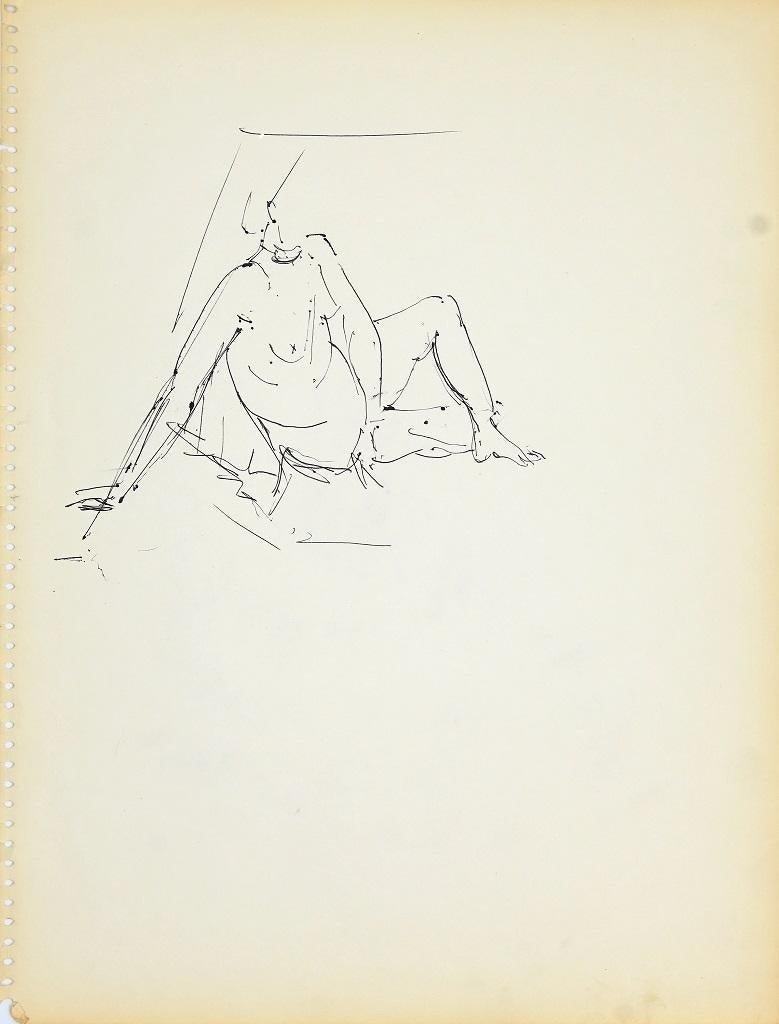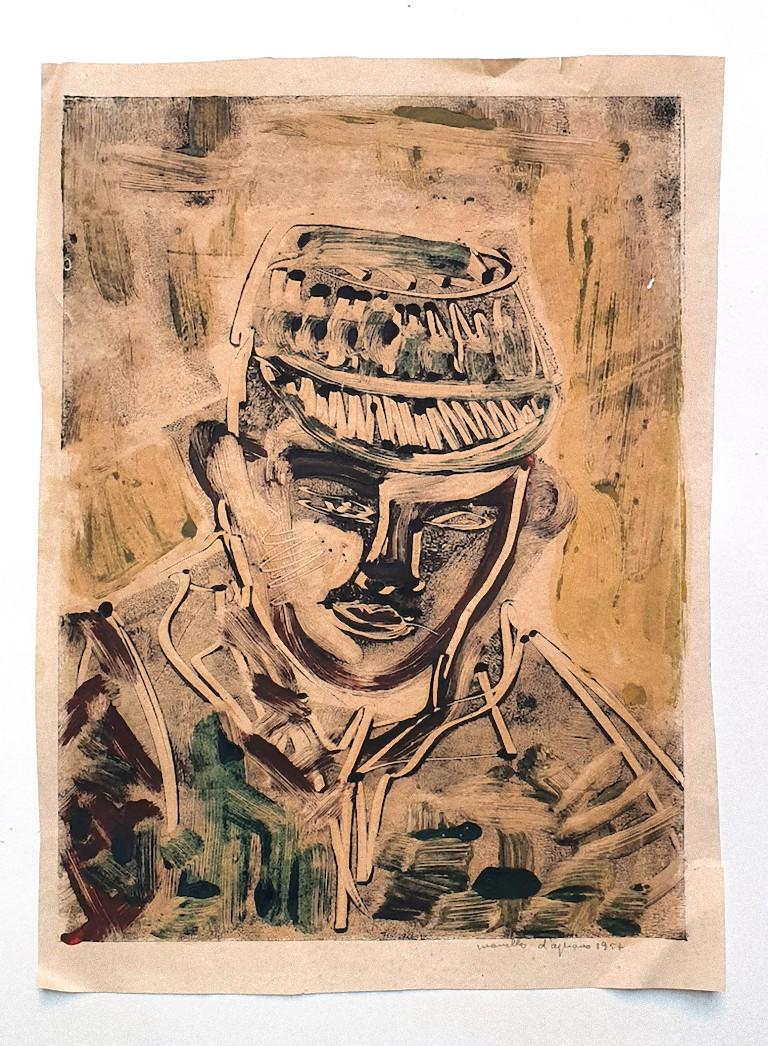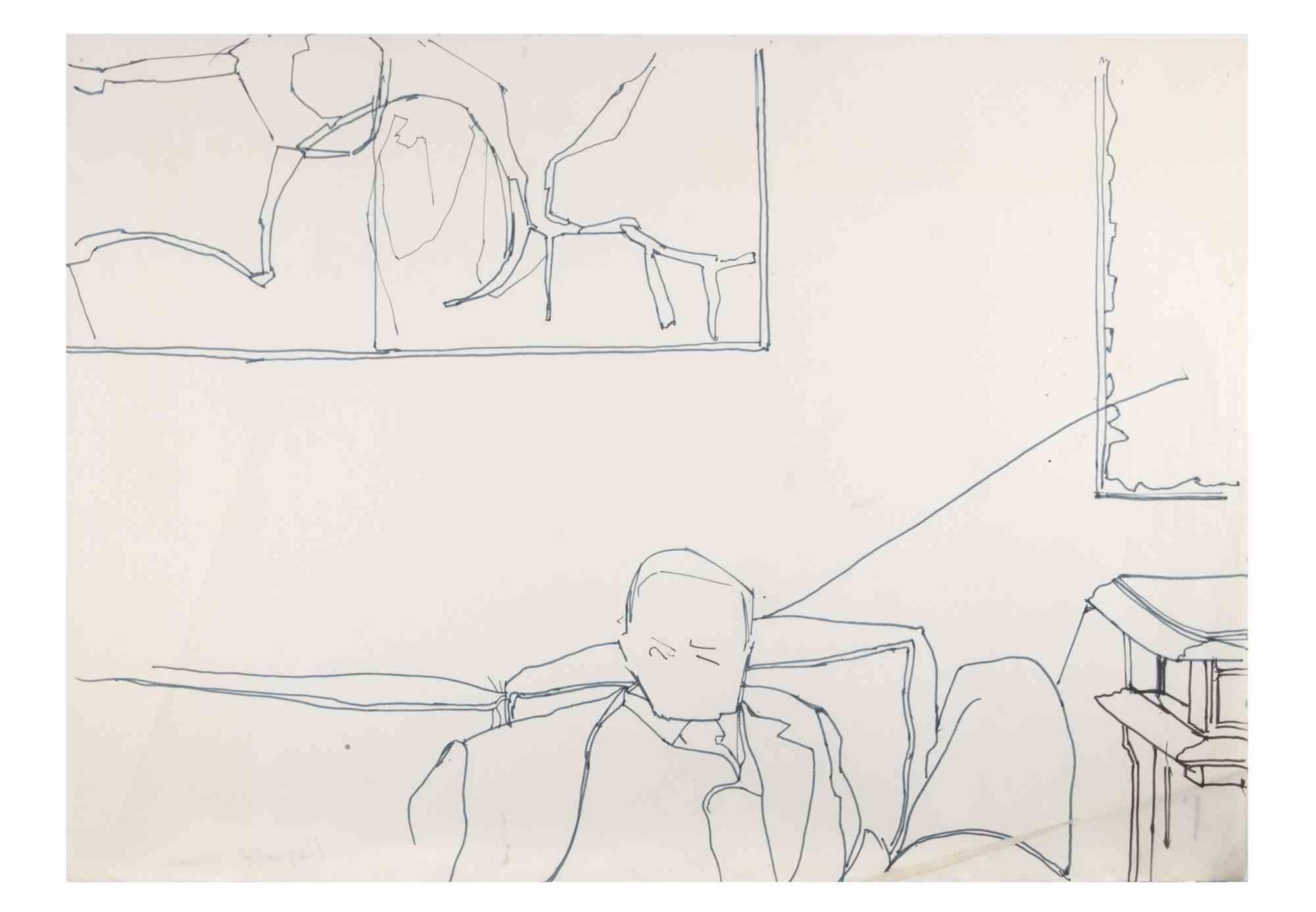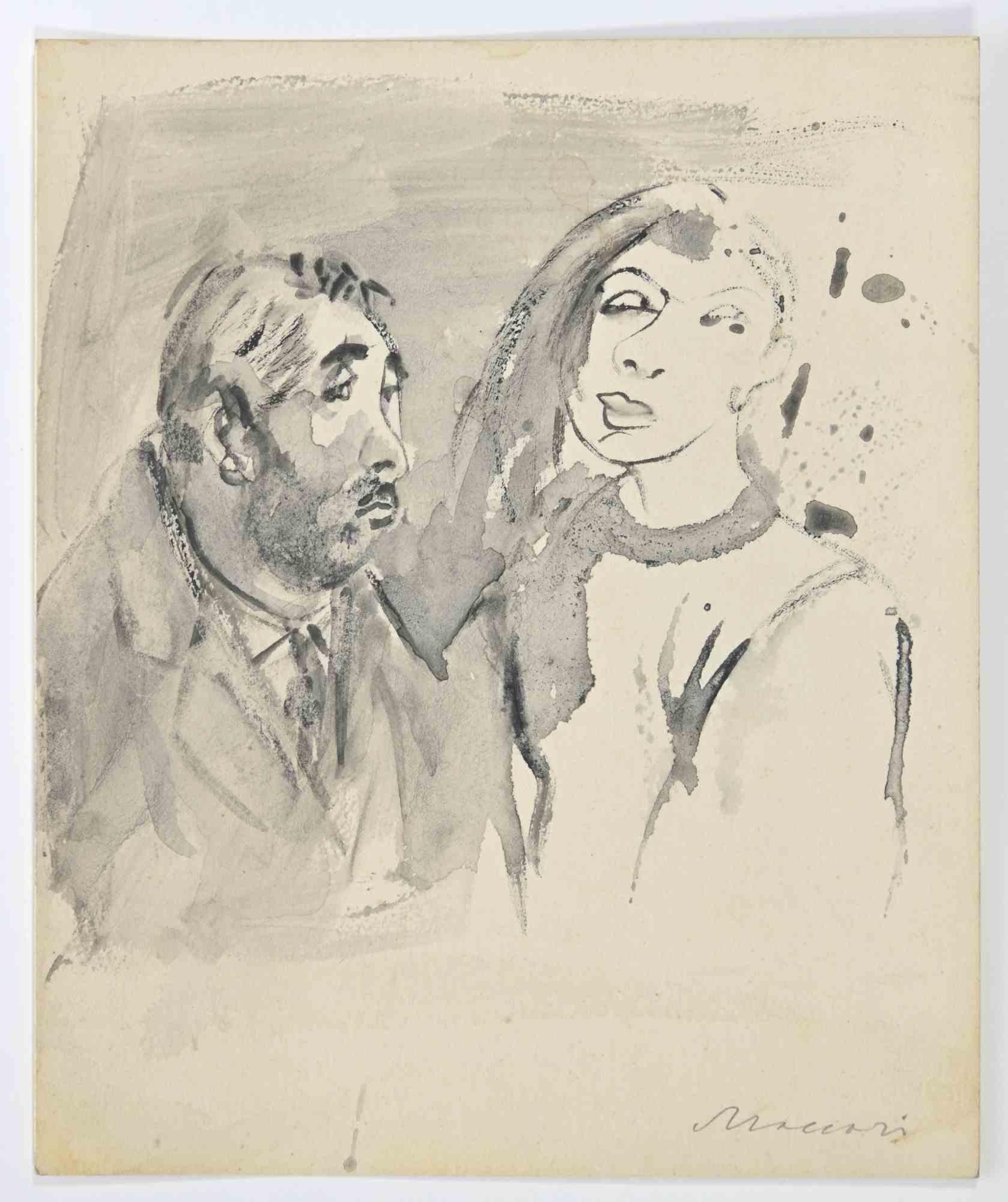Abraham WalkowitzModernist Drawing, Portrait of a Man1900
1900
About the Item
- Creator:Abraham Walkowitz (1878 - 1965, American)
- Creation Year:1900
- Dimensions:Height: 16 in (40.64 cm)Width: 13 in (33.02 cm)
- Medium:
- Movement & Style:
- Period:
- Condition:Measurements include frame.
- Gallery Location:Surfside, FL
- Reference Number:1stDibs: LU38211635602
Abraham Walkowitz
Abraham Walkowitz is perhaps best known for his watercolor studies of Isadora Duncan and the dance. However, Walkowitz laid claim to being the first to exhibit truly modernist paintings in the United States. After 1909, he became an intimate of Alfred Stieglitz's 291 Gallery, and while there became a participant in the debate over modern art in America. Walkowitz was an outspoken proponent of the continuous experimentation in the arts, which was his definition of modernism. As an artist, Walkowitz embodied the changing role of the modernist painter in the United States, as modernism moved from an avant-garde protest against established modes to become an accepted style and tradition.
Abraham Walkowitz was a Russian born, turn-of-the-century immigrant to the United States, who grew up in New York's Lower East Side. He first studied art at the Educational Alliance, the Cooper Union and the National Academy of Design. In 1906, he journeyed to Europe where he studied at the Académie Julian in Paris. Upon his return to the United States in 1907, he became a fully-fledged convert to modernism, and his first exhibit, at the Haas Gallery in that year, brought him a measure of notoriety as well as the attention of Stieglitz and other pioneers of non-objective art. In subsequent years, he became one of the most exhibited painters shown at the 291 Gallery, a fact which was also reflected in the pages of Stieglitz's polemical journal of modernism, camera work. As a result of this early attention, by the time of the Armory Show of 1913, to which Walkowitz contributed several paintings, his work was widely known to both fellow modernists as well as their opponents.
Walkowitz was clearly part of the new vocabulary of American art and criticism. During the 1920s and 1930s, as the first-generation modernists lost their revolutionary cast, and as American realism gained in favor, Walkowitz continued his experiments with form and line, especially in his series of Duncan studies. Although his paintings received less critical attention than they once had, Walkowitz was clearly one of the grand old folk of American modernism. During the depression, Walkowitz was politically active on behalf of unemployed artists supporting various new-deal initiatives in the arts. In the 1940s, Walkowitz gained national attention when he explored the varieties of the modernist vision in the form of an exhibit of 100 portraits of him by 100 artists. The result was widely discussed and was featured in Life magazine in 1944.
In 1945, Walkowitz traveled to Kansas, where he painted landscapes made up largely of strip mines and barns. This was his last venture in active painting — by 1946, glaucoma, which led to his eventual blindness, began to impair his vision and limit his ability to work. Walkowitz then turned to the preparation of a series of volumes of his drawings, designed to illustrate the development of modernism in the 20th century, and in so doing, established his role as a pioneer American modernist.
- ShippingRetrieving quote...Ships From: Surfside, FL
- Return PolicyA return for this item may be initiated within 3 days of delivery.
- Vintage Israeli Bezalel School Drawing Family Playing, Dogs Puppies Kibbutz LifeBy Moshe AvniLocated in Surfside, FLMoshe Avni was born in 1937, in Kibbutz Kfar Blum in the Upper Galilee in Israel. Presently, he lives and paints in Jerusalem. During the years 1956-1957, he studied Painting and Gra...Category
1960s Modern Figurative Drawings and Watercolors
MaterialsPaper, Ink, Pen
- Ink Drawing Man in Suit and Hat with NudeBy Jonathan ShahnLocated in Surfside, FLProvenance: Hinckley & Brohel Gallery Jonathan Shahn, Born 1938 has been making sculpture, drawings and prints of the human figure since the early 1960s. He teaches at the Art Studen...Category
20th Century American Modern Figurative Drawings and Watercolors
MaterialsPaper, Ink
- Figures in the Forest, Rare Drawing, Israeli Modernist masterBy Itzhak DanzigerLocated in Surfside, FLYitzhak Danziger Genre: Expressionist Subject: People Medium: Ink Surface: Paper Dimensions w/Frame: 17" x 17" Yitzhak Danziger (Hebrew: יצחק דנציגר; 26 June 1916 – 11 July 1977) was an Israeli sculptor. He was one of the pioneer sculptors of the Canaanite Movement, and later joined the "Ofakim Hadashim" (New Horizons) group. orn in Berlin in 1916, Izhak Danziger moved to Palestine in 1923. From 1934-1937 Danziger studied at the Slade School of Fine Art, London. During the 1940s he worked in Paris with Zadkine and Brancusi. In the 1950s he exhibited in London at the Institute of Contemporary Art. He is considered to be one of Israel's most important sculptors. His work, which consists largely of environmental pieces, has been exhibited at the Hisrshhorn Museum and Sculpture Garden in Washington D.C. In 1969 Danziger was awarded the Sandberg Prize by the Israel museum. He died in 1977. When discussing Chariot II, Mordechai Omer compares it to a work of similar subject by Alberto Giacometti. He explains that Danziger, unlike Giacometti, removes the figure, leaving only the chariot itself. Omer eloquently explains that "The vehicle designed to serve the needs of the person inside is devoid of this human presence, with only the memories of its headlong downhill journeys leaving their mark in the parts of a half-ruined, half-standing chariot, allowing wide scope for the viewer's imagination. If Giacometti's chariots reminded him of hospital pharmacy wagons, Danziger's gleaming brass chariots...Category
Mid-20th Century Modern Figurative Drawings and Watercolors
MaterialsPaper, Ink
- Large Drawing of Boy by French Armenian Modernist Jean Jansem Ecole De Paris ArtBy Jean JansemLocated in Surfside, FLJean Jansem (Hovhannes Semerdjian) 1920-2013 Young Boy (sad young man) Hand signed lower left corner Provenance: Marble Arch Gallery NYC Measurements Image size: 25 by 18 inches, ove...Category
1960s Modern Figurative Drawings and Watercolors
MaterialsPaper, Ink
- Polish French Judaica Watercolor Gouache Painting Original Bauhaus Yiddish ArtBy Moses Bagel BahelferLocated in Surfside, FLMoses Bahelfer BAGEL (1908-1995) Moses Bagel (born Moshe Bahelfer) was a Polish-born Jewish artist and graphic designer associated with the original Bauhaus and then the School of Paris (Ecole de Paris) Moshe Bagelferyches was born on June 29 , 1908 in Vilnius, (Vilna, Poland) then part of the Russian Empire. He took up painting from at an early age, later going on to work as an apprentice at a local vocational school in Vilno while taking classes at the Vilnius Academy of Arts. Bagelferyches also joined Yungvilno, a group formed by young Jewish artists, poets and writers in the city, who hosted exhibitions. In 1927, he left for Germany where he joined the Bauhaus arts and architecture school in Dessau. From 1928 to 1932, he studied under Joost Schmidt, Paul Klee, Lyonel Feininger, and Wassily Kandinsky. His painting was close to pure abstract art. He maintained close bonds with former students of the Bauhaus school who lived in Paris, Joseph Weinfeld, Jean Leppien...Category
20th Century Modern Figurative Drawings and Watercolors
MaterialsInk, Watercolor, ABS
- Costume Stage Drawing Medieval Jester or Harlequin Figure Watercolor PaintingLocated in Surfside, FLStage costume drawing in the style of Ballet Russe. unsigned older piece.Category
Early 20th Century Modern Figurative Drawings and Watercolors
MaterialsInk, Watercolor
- Decor in Frame - Original Ink Drawing by Louis Touchagues - Mid-20th CenturyBy Louis TouchaguesLocated in Roma, ITDecor in Frame is an original artwork realized by Louis Touchagues (1893 - 1974). Original ink drawing on paper glued on cardboard. Hand-signed. Good conditions, good cosmetic we...Category
Mid-20th Century Modern Figurative Drawings and Watercolors
MaterialsInk, Paper
- Female Figure - Original Pencil Drawing by Herta Hausmann - 1950sLocated in Roma, ITFemale Figure is an original pencil drawing on ivory paper made by Herta Haausmann (1892-1972). Black marker pen on paper. In good condition. This is an original drawing representi...Category
1950s Modern Figurative Drawings and Watercolors
MaterialsInk, Paper
- Lovers - Original Ink Drawing on Paper by Emilio Greco - 1969By Emilio GrecoLocated in Roma, ITHand signed, located, and dated on the lower right.Category
1960s Modern Figurative Drawings and Watercolors
MaterialsInk, Paper
- Portrait - Drawing in Mixed Media on Paper - 1957Located in Roma, ITPortrait is an original drawing in mixed media -ink and watercolor- on paper realized in 1957 by an Anonymous artist of the XX century, Hand-signed on the lower right (unreadable), d...Category
20th Century Modern Figurative Drawings and Watercolors
MaterialsInk, Mixed Media, Paper, Watercolor
- On The Sofa - Drawing By Reynold Arnould - 1970Located in Roma, ITOn The Sofa is a China Ink Drawing realized by Reynold Arnould (Le Havre 1919 - Parigi 1980). Good condition on a white paper. No signature. Reynold Arnould was born in Le Havre...Category
1970s Modern Figurative Drawings and Watercolors
MaterialsPaper, Ink
- The Couple - Drawing by Mino Maccari - 1940sBy Mino MaccariLocated in Roma, ITThe Couple is a watercolor Drawing realized by Mino Maccari (1924-1989) in 1940 ca. Hand-signed on the lower margin. Good condition. Mino Maccari (Siena, 1924-Rome, June 16, 1989...Category
1940s Modern Portrait Drawings and Watercolors
MaterialsPaper, Watercolor, Ink





